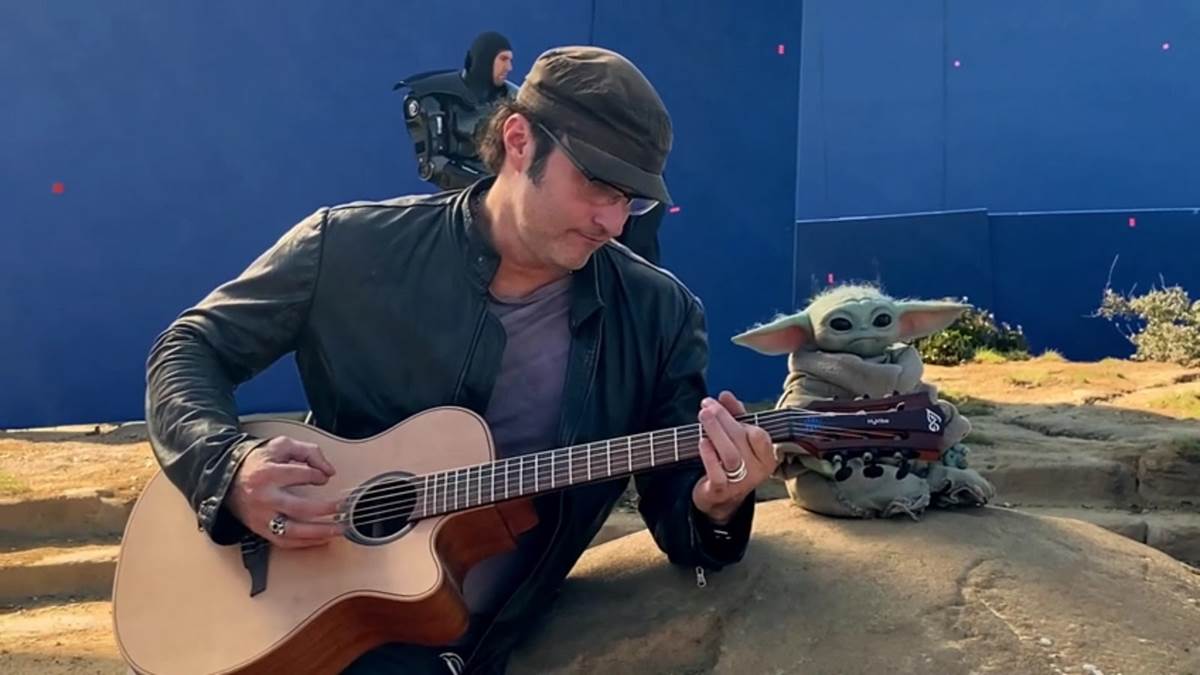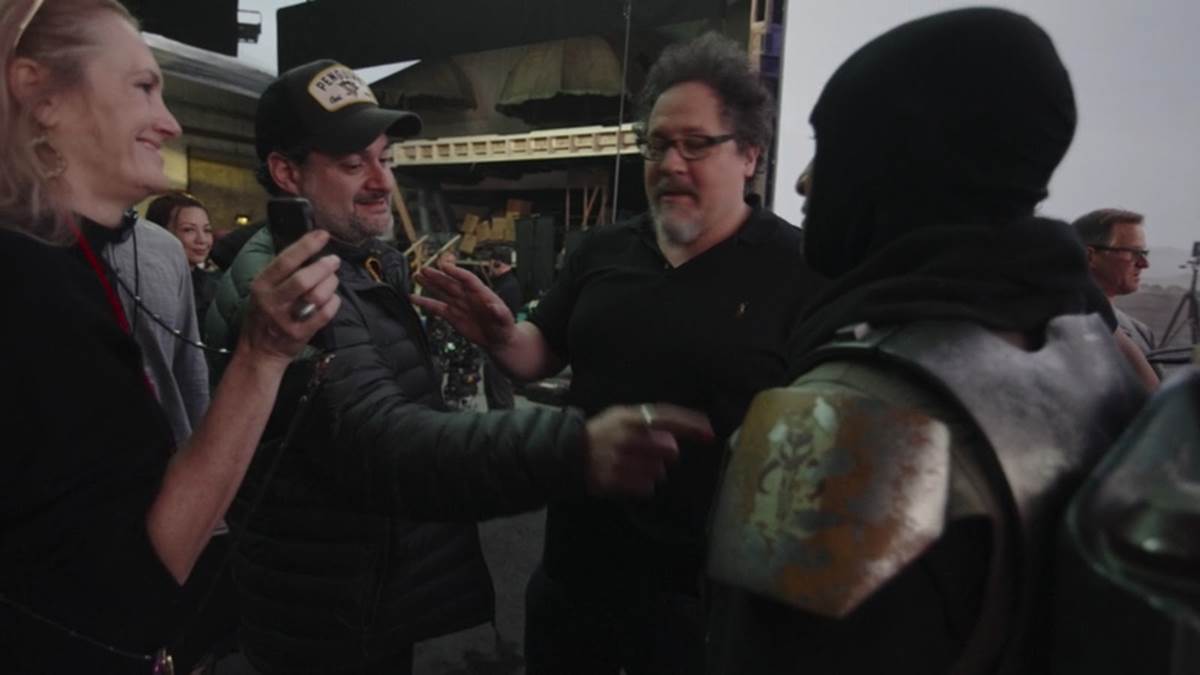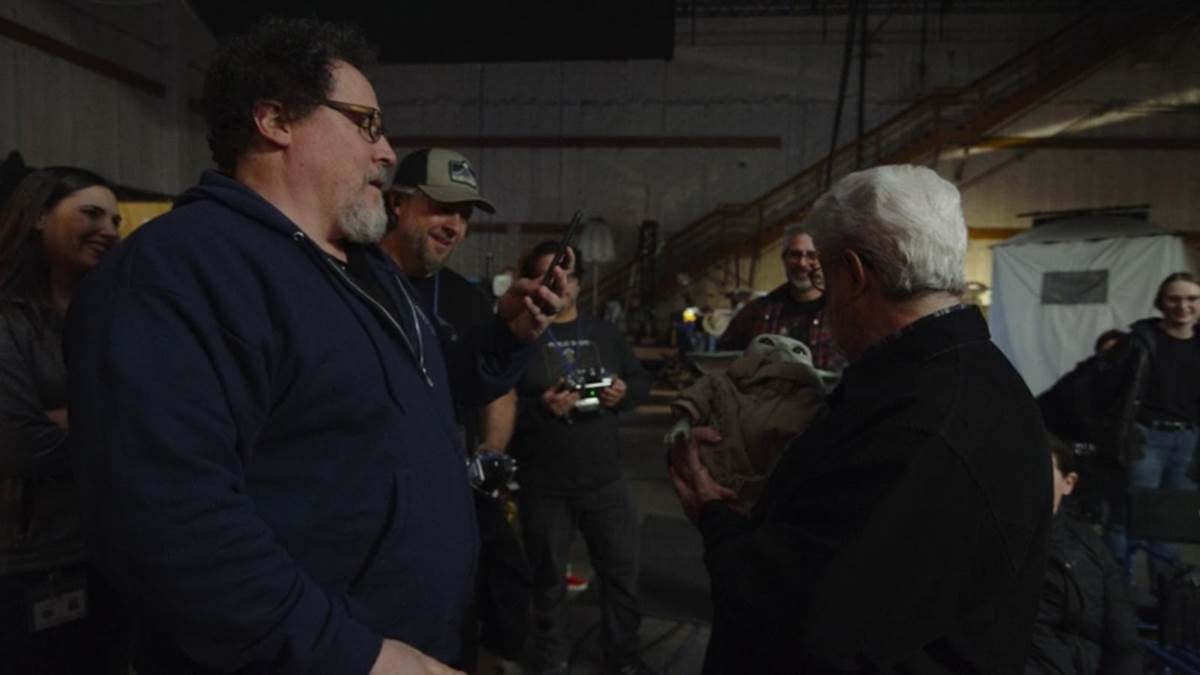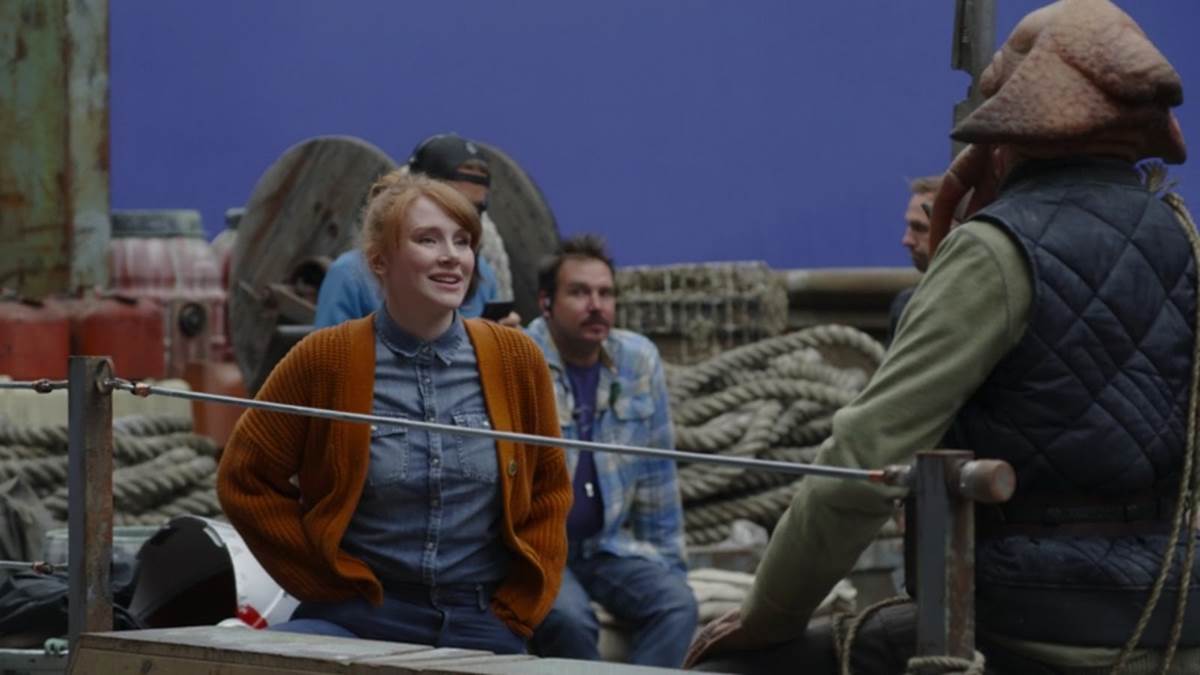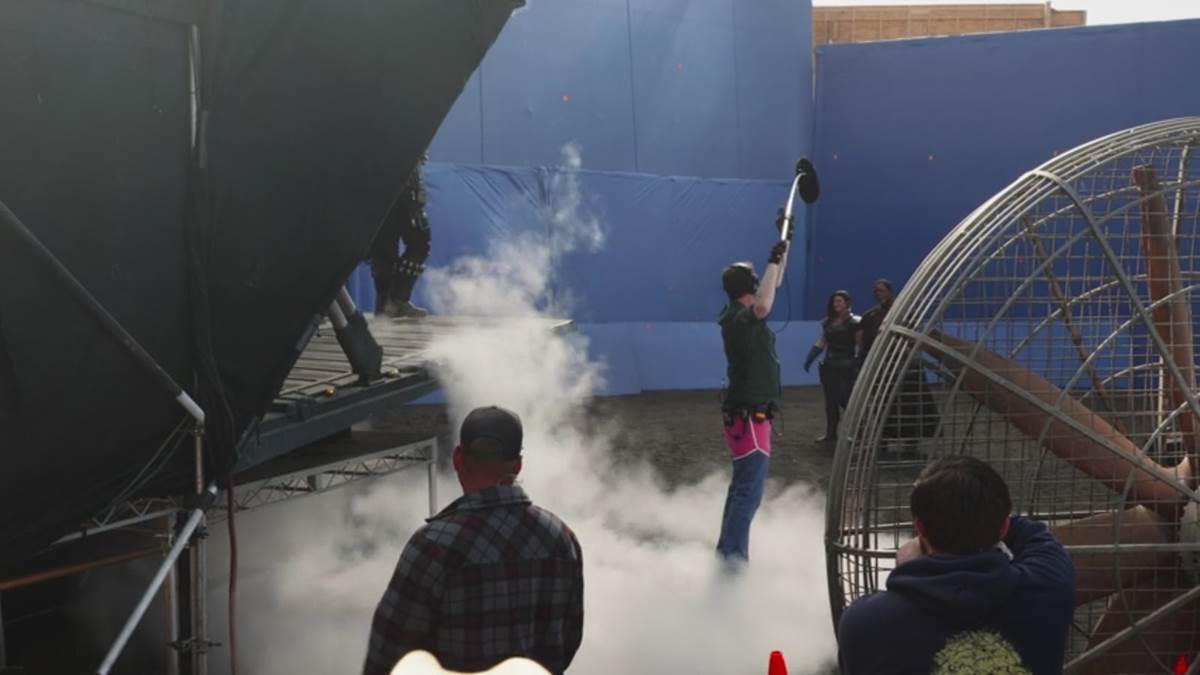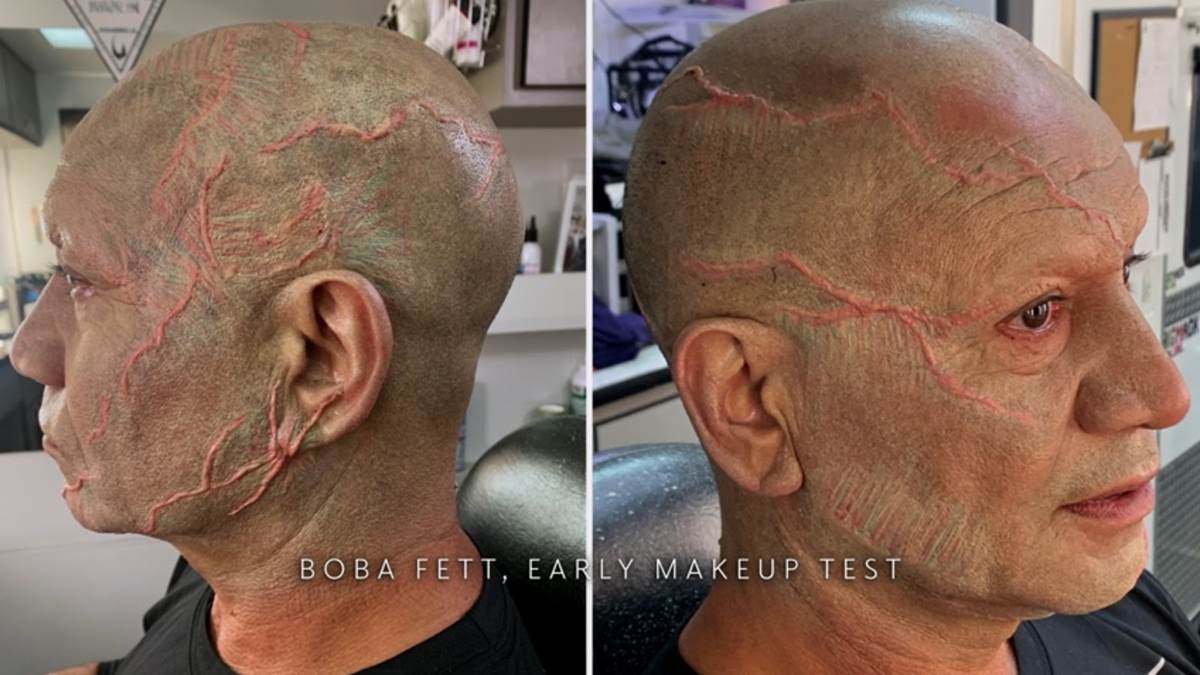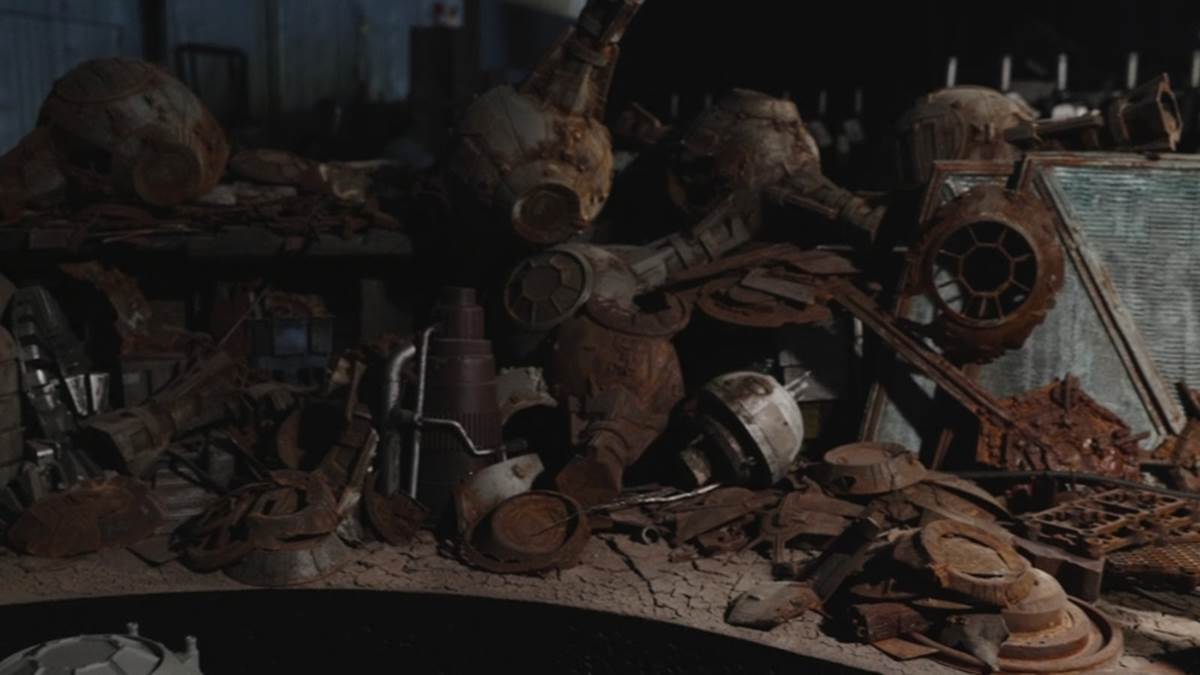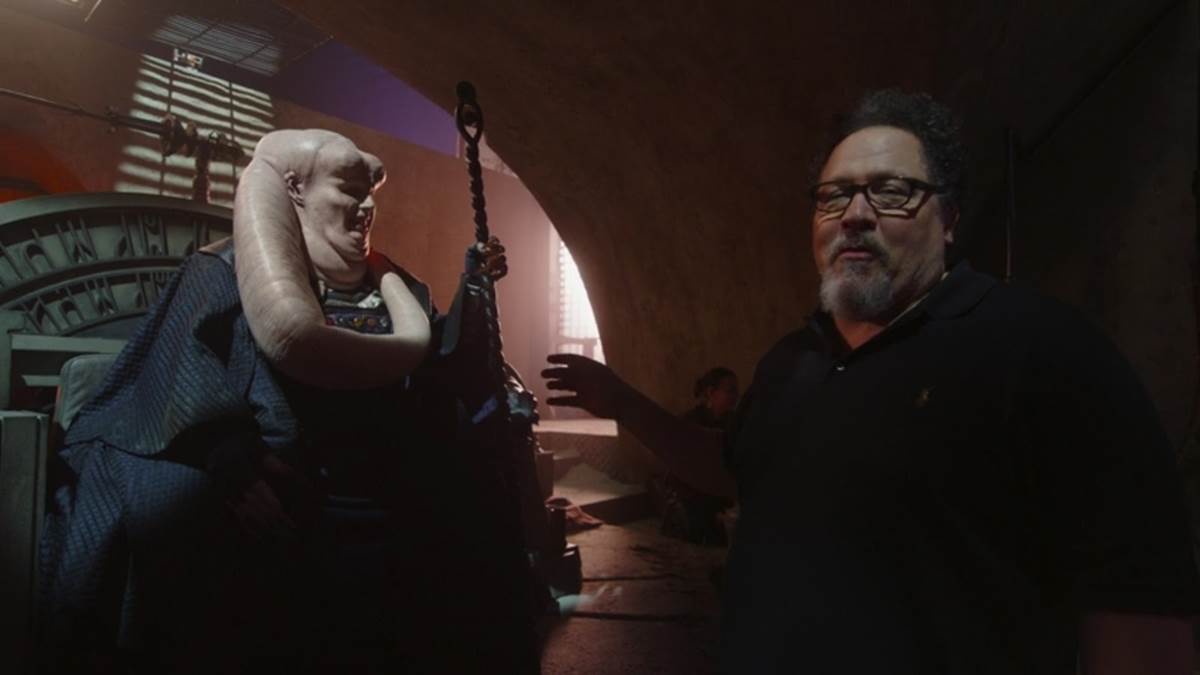The second season of Disney+’s smash-hit live-action Star Wars series The Mandalorian wrapped up last week, and with it comes an all-new behind-the-scenes look at how the show is made.
Instead of eight full episodes of Disney Gallery: The Mandalorian this time around, we get one fascinating 65-minute peek at the process Jon Favreau, Dave Filoni, and company used to bring The Mandalorian season two to the small screen. In the bullet-point list below, I’ve enumerated the most fascinating tidbits and factoids we learned from this new special that premiered this morning on Disney+.
- Robert Rodriguez (director of Chapter 14) constantly played his guitar while on set.
- Like the first season of The Mandalorian, season two used the production codename “Huckleberry.”
- Star Wars creator George Lucas is shown chatting and laughing with actress Rosario Dawson while she is in her Ahsoka Tano costume.
- “For season two, what is most important to me is to make people care.” – actor Pedro Pascal (Din Djarin)
- We see executive producer Dave Filoni and series creator Jon Favreau discussing how Boba Fett’s armor should look in the show.
- Filoni says that after season one established what the show is, season two allows them to have a little more fun while deepening “the whole experience for the characters and the viewer.”
- Evidently actress/comedian Amy Sedaris (Peli Motto) improvises a lot during her takes.
- While directing actor Timothy Olyphant (Cobb Vanth) for Chapter 9, Jon Favreau references the Spaghetti Western films of Sergio Leone.
- Favreau talks about his desire to step into the role of director for an episode this season after acting only as executive producer for season one and overseeing the whole show. He says he threw himself a lot of curveballs because he knows how the show works better than an outside director who might be stepping in.
- Animation supervisor Hal Hickel and production designer Doug Chiang talk about creating the Krayt Dragon for Chapter 9 based on existing Star Wars reference material. As the creature ages, it grows additional limbs. The dragon ended up being over 600 feet long in-universe after its redesign. It moves through the ground by liquefying the sand around it with sound waves. Chiang compares it to the shark in Jaws: “The less you reveal of it, the better it is.”
- For season two, Favreau tried to think of new ways to use the Volume. The underground arena was an early example of that.
- The Volume also became bigger in season two. It’s a hundred feet long and 22 feet tall. New color management science from Lucasfilm’s in-house visual effects department Industrial Light & Magic allowed director of photography Baz Idoine to shoot lower-light scenes.
- Favreau, his 18-year-old son, Dave Filoni, and actor/director Carl Weathers helped paint the graffiti in Chapter 9, under the supervision of graffiti artist David Choe, who provided most of the art and was also given a cameo appearance as an alien.
- Hidden among the graffiti is a depiction of a lightsaber duel between Luke Skywalker and Darth Vader, among TIE fighters, X-wings, the Death Star, and various other Star Wars Easter Eggs.
- A makeup design room was built on-site for production of season two to help expedite the makeup process.
- The Gamorrean arena fighters are intended to look leaner than the guard in Jabba’s Palace. Their vibro-axe props were made of aluminum.
- Favreau wanted to make the arena scene feel like a gangster movie, as he likes that Star Wars can dip into a variety of genres.
- We see Favreau directing actor John Leguizamo on performing the voice of Gor Koresh, and coaching him to approach the attitude of the role more like Marlon Brando in The Godfather.
- “What’s fun about the experience of making The Mandalorian is that it’s a creative team working together.” – Jon Favreau
- Based on behind-the-scenes footage, it seems as though Pedro Pascal may have been physically on set and in costume as the Mandalorian significantly more for season two than for the first season.
- Favreau wanted to have Mando say “Maclunkey!” when he shoots out the streetlight in Chapter 9, but Filoni talks him out of it.
- Chiang talks about creating an ice planet that was distinct from Hoth in Chapter 10 by using glaciers. He and director Peyton Reed also discuss the evolution of the ice spiders from concept art Ralph McQuarrie had created for Dagobah in The Empire Strikes Back.
- Reed liked that the bulk of Chapter 10 was made up of scenes between a guy in a helmet, a puppet, and the Frog Lady performed by Misty Rosas (season one’s Kuiil), who brought a lot of physicality to the role.
- Frog Lady is a practical costume and mask with CG embellishments added in post-production. The character’s leaping action was also created using CGI.
- “It felt like something she was always meant to do.” – Pedro Pascal on actor-turned-director Bryce Dallas Howard
- The Trask boat was built on a soundstage outside of the Volume with a 15×15-foot tank of water in its hull.
- Howard talks about how Favreau insisted the team not incorporate shots on soundstages or in the Volume that couldn’t be done on location.
- Costume designer Shawna Trpcic talks about how all the Mon Calamari costumes are intended to be vintage-looking.
- Two full units shot simultaneously for season two.
- While Jon Favreau’s character Pre Vizsla shared scenes with Katee Sackhoff’s Bo-Katan Kryze in Star Wars: The Clone Wars, the two voice actors never recorded together.
- Years earlier, Dave Filoni told Sackhoff that Bo-Katan might eventually transition from animation to live-action.
- Mercedes Varnado AKA WWE’s Sasha Banks was brought in to play Koska Reeves because Favreau wanted a Mandalorian character with her brand of fierceness and energy.
- Howard had a female extra pay the check in the inn scene on Trask because “ladies pay in my universe.”
- Carl Weathers says season one gave him “a sense of the flow of the show and the flow of the stories” and that his experience with action as an actor helped him direct his episode. “I really love directing. And the more I do it, the more of it I want to do.”
- The streets of Nevarro were rebuilt and refreshed from season one to season two.
- Pascal says he loves working with actress Gina Carano (Cara Dune) and says within her tough exterior, “there is such a feeling and vulnerable person.”
- Trpcic gave Cara Dune upgraded armor with a new paint job, but it still has some cuts and bruises because she wanted to respect that “she’s a tough dame.”
- At one point the boom microphone operator is wearing pink shorts over his jeans, as a tribute to an infamous crew member from the set of the original Star Wars film.
- The Dave Filoni-directed Chapter 13 took place entirely outside but was shot exclusively in the Volume and on soundtages.
- Filoni talks about the Akira Kurosawa samurai-cinema influence on his episode, We see him explaining samurai battles to Rosario Dawson, and the stunt coordinators talk about how they implemented that style into the fight choreography.
- It was important to Filoni to honor the animated history of Ahsoka Tano in The Mandalorian. “I intentionally did not do anything with her in season one because I didn’t want to mess it up.”
- The makeup designers talk about how tricky it was to re-create the character of Ahsoka in live-action. The prop masters had a similar difficulty in making her lightsabers look right. They ended up having to use external batteries to make the hilts the correct size and shape.
- The practical lighting in the practical lightsaber blades helped the DPs compose their shots.
- Filoni says he doesn’t like bringing existing characters into the show unless they serve a purpose, like how Ahsoka helped us learn Grogu’s name and could feel his thoughts.
- We see footage of George Lucas holding the Grogu puppet and Jon Favreau taking pictures of him.
- Some time is spent talking about the decision to bring Boba Fett into The Mandalorian, and we see a debate about whether or not the audience will pick up on the clue dropped in season one.
- Robert Rodriguez was nine years old when the original Star Wars movie came out, and he says he saw it again and again in theaters. He says he became a huge Boba Fett fan before The Empire Strikes Back even came out: “He was always my favorite character.”
- Actor Temuera Morrison says he feels honored to bring back Boba Fett. The stunt coordinators used his traditional Maori dance movement in some of Fett’s fight choreography.
- The makeup team experimented with different degrees of scarring on Fett’s face from the Sarlacc pit.
- Trpcic says Morrison’s posture changed when he finally put on the armor. “It’s quite a dynamic feeling. He’s the kingpin of the galaxy. You don’t want to mess with this guy,” says Morrison.
- Rodriguez turned a three-page battle scene into a nine-minute battle scene “because I was just that excited to be bringing Boba back. I wanted him to live up to his name that we would whisper since we were kids. If Mando is a gunslinger, Boba needs to be a barbarian.”
- Rodriguez shot an animatic for the big action scene in Chapter 14 in his backyard using his sons, his Boba Fett and stormtrooper Halloween costumes, and Star Wars action figures.
- The gaffi stick Boba Fett uses was specifically requested by Morrison, and is longer and more slender than the ones used by the Tusken Raiders in the original Star Wars.
- The Tython action scenes were shot on location in Simi Valley, California because of certain technical limitations with the Volume. Many of the rocks were hand-crafted and all but one of the explosions were added in post.
- Actress Ming-Na Wen (Fennec Shand) says she loves doing physical stuff, but after the difficulties of shooting on location in Southern California she was ready to go back to the Volume.
- Temuera Morrison also jammed out on Robert Rodriguez’s guitar during downtime. He sang a blues song about season two of The Mandalorian.
- Director Rick Famuyiwa talks about how he, Favreau, Filoni, and Christopher Yost are the only people who have contributed to the writing of the series. He says he wanted to show the shades of gray in Star Wars with Chapter 15, instead of always looking at the franchise’s morality in terms of black and white.
- Actor/comedian Bill Burr (Migs Mayfeld) says Famuyiwa is extremely cool and laid-back on set despite his episodes being very precise and intricately planned.
- We get a cool behind-the-scenes look at how the interior rotation of the Slave I was planned and executed using the Volume. “Spinning’s a good trick.” – Dave Filoni
- A five-foot-long practical miniature model of Moff Gideon’s light cruiser was built for the production. Visual effects supervisor used his motion control rig to shoot a number of shots using this miniature.
- Miniatures were also used in another innovative way for season two– they were built, scanned, and then used as backgrounds to be projected behind the actors in the Volume.
- Peyton Reed was excited to explore how the duel between the Darksaber and the Beskar staff would look and feel when he directed Chapter 16.
- The prop masters talk about how difficult it was to get the Darksaber to look just right for Dave Filoni.
- Actor Giancarlo Esposito (Moff Gideon) utilized so much rage in his fight scenes that he almost ran through too many prop Darksabers by damaging them in the duel. “Giancarlo brings the greatest energy ever. It actually brings up my skill set as well. People are going to be blown away.” – Mandalorian double Lateef Crowder
- The Dark Troopers were played by stunt performers in costume. Their limbs and joints were digitally manipulated in post. Favreau wanted their armor to look similar to Darth Vader’s in the way they reflected light.
- Despite being costumed actors, Doug Chiang still wanted the Dark Troopers to look like their original inspiration from the 1995 Star Wars: Dark Forces video game.
- Jabba’s Palace was impossible to recreate in the Volume, so it was built as accurately as possible on a soundstage, down to the last crack and detail.
- Skywalker Sound’s Matthew Wood reprised his role as Bib Fortuna from Episode I – The Phantom Menace. We see Favreau, Chiang, and Filoni discussing how Fortuna became gluttonous after taking Jabba’s throne.
- Bib Fortuna’s staff in this episode originated in Kenner’s Return of the Jedi action figure line.
- “I felt an extreme sense of responsibility to get this episode right.” – Peyton Reed
Disney Gallery: The Mandalorian – “Making of Season 2” is now available to stream exclusively on Disney+.
Sign up for Disney+ or the Disney Streaming Bundle (Disney+, ESPN+, and ad-supported Hulu) now

